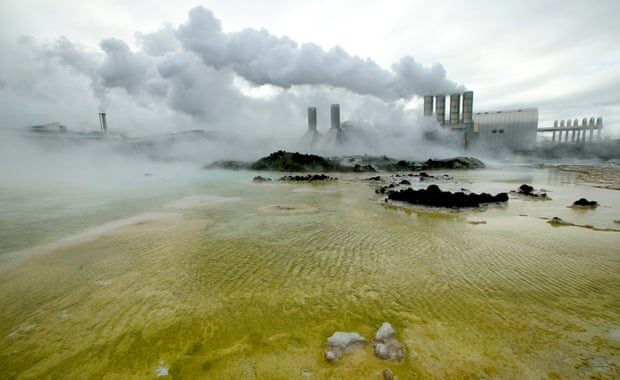Iceland
 |
|
Svartsengi geothermal power plant, Reykjanes Peninsula, Iceland. [Photo/Agencies] |
Few places are as thoroughly predisposed to life without fossil fuels as Iceland. This spectacular volcanic land sits at the head of the mid-Atlantic ridge, where the tectonic plates of North America and Eurasia are splitting apart and the Earth's mantle bubbles towards the surface. The Icelandic people, so long impoverished by their reliance on burning peat and imported coal from Europe to survive, have harnessed this heat to enable an almost total transition from the fossil-powered past.
All of Iceland's electricity comes from renewable sources, three quarters from hydroelectric dams on the glaciers and mountain sides and the rest from geothermal. Bores are drilled 1-2 miles into the thin crust of earth. Water pumped down into the hot rocks returns as high pressure steam, spinning turbines to produce electricity.
The country also uses this heat directly. Two-thirds of the country's primary energy comes from geothermal. Hot water is everywhere and is tapped to heat homes and offices. The streets of Reykjavik are kept snow and ice free in winter through a system of heated water pipes.
None of this, however, has stopped the Icelandic government seeking to exploit the oil and gas reserves of its surrounding seas.